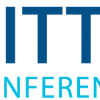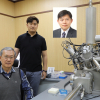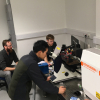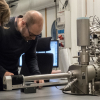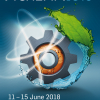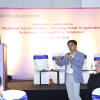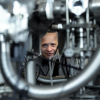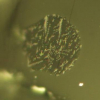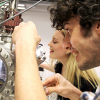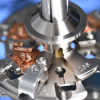Surface Analysis News
Researchers from Daegu Gyeongbuk Institute of Science and Technology have used SIMS to visualise up to tens of different proteins simultaneously in the same cell.
Using gas cluster ion beam secondary ion mass spectrometry (GCIB-SIMS), researchers at Penn State have directly observed functional enzyme clusters (metabolons) involved in generating purines, the most abundant cellular metabolites.
Applications are invited for these prestigious awards administered by the Association of British Spectroscopists (ABS) Trust.
Heidelberg University physicists develop new method based on UV photoelectron spectroscopy to show the energetic landscape within solar cells made from organic materials.
Hiden Analytical have opened a new company, Hiden Analytical Europe GmbH.
The ABS Trust is seeking applications for the Gordon F. Kirkbright bursary award and the new Edward Steers bursary, both open to early career scientists.
Machine learning techniques using a combination of the layer clustering and decision tree methods aids prediction of spectra.
Electronic circuits are miniaturised to such an extent that quantum mechanical effects become noticeable. Using photoelectron spectrometers, solid-state physicists and material developers can discover more about such electron-based processes. Fraunhofer researchers have developed a new spectrometer that works in the megahertz range.
Applications for this prestigious award are invited by 30 November 2018.
Raman, infrared, x-ray photoelectron and ultraviolet/visible spectroscopies are being used at the University of Liverpool to help develop better energy storage devices.
The use of time-of-flight secondary ion mass spectrometry imaging to examine the skin can reduce the number of animal experiments while providing new opportunities to develop pharmaceuticals and cosmetics.
Achema 2018 is inviting contributions to the Achema Congress and the PRAXISforums; deadline 22 September 2017.
A cooperation between Messe München India and the Indian Pharma Machinery Manufacturers Association (IPMMA) will collocate events jointly representing 600+ global and Indian companies.
Titanium dioxide (TiO2) is one of the most promising materials for photovoltaics and photocatalysis nowadays. This material appears in different crystalline forms, but the most attractive one for applications is “anatase”. EPFL scientists have now shed light onto the problem by a combination of steady-state and ultrafast spectroscopic techniques, as well as theoretical calculations.
A new description of electron scattering in the surface layers of samples proposed by the Institute of Physical Chemistry of the Polish Academy of Sciences in Warsaw significantly speeds up materials analysis and enables a better understanding of what can really be seen in a sample.
Tiny beads of volcanic glass found on the lunar surface during the Apollo missions are a sign that fire fountain eruptions took place on the Moon’s surface. Now, using secondary ion mass spectrometry, scientists from Brown University and the Carnegie Institution for Science have identified the volatile gas that drove those eruptions.
Silver is often used as a coating on medical equipment used for chemotherapy, but this silver coating can break down drugs. With the help of XPS, researchers have found a graphene coating that will help boost the effect of chemotherapy.
The US Naval Research Laboratory has a new Local Electrode Atom Probe instrument to help in the engineering of new materials.
Super-eruptions are not the only type of eruption to be considered when evaluating hazards at volcanoes with protracted eruption histories, such as the Yellowstone (Wyoming), Long Valley (California), and Valles (New Mexico) calderas in the USA. There have been more than 23 effusive eruptions of rhyolite lava at Yellowstone since the last caldera-forming eruption ~640,000 years ago, all of similar or greater magnitude than the largest volcanic eruptions of the 20th century.

